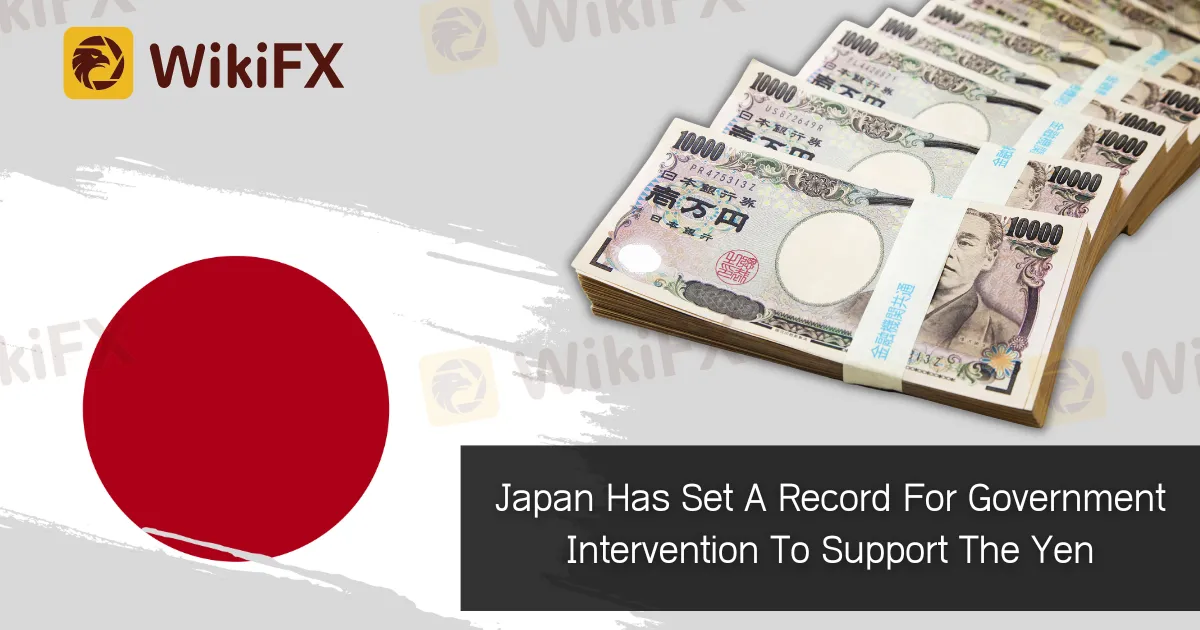简体中文
繁體中文
English
Pусский
日本語
ภาษาไทย
Tiếng Việt
Bahasa Indonesia
Español
हिन्दी
Filippiiniläinen
Français
Deutsch
Português
Türkçe
한국어
العربية
Japan Has Set A Record For Government Intervention To Support The Yen
Abstract:After the yen fell to 151.94 per dollar on October 21, a 32-year low, the government decided to intervene. Japan spent a record 5.62 trillion yen ($42.5 billion) that day. Then, on October 24, a second intervention was initiated, with 730 billion yen invested to stop the currency's further drop.

According to the Ministry of Finance Japan, the Japanese government participated in the foreign currency market in October last year, selling 6.35 trillion yen ($48 billion) in US dollars, establishing a new record for intervention.
The government decided to intervene after the yen plummeted to 151.94 per dollar on Oct. 21, a 32-year low. On that day, Japan spent a record 5.62 trillion yen ($42.5 billion). Then, on October 24, a second intervention was launched, investing 730 billion yen to halt the currency's decline any further.
Japan's based regulated Forex broker FXTF

However, this is not the first time Japan has interfered in the yen against the US dollar in the last 24 years. Japan utilized 2.84 trillion yen on September 22 to stem the currency's rapid drop.
In the past, Japan seldom took action to acquire yen and sell dollars. The dollar has now retreated and is trading at 130. However, Japan is a resource-poor nation, and this intervention has increased the local cost of living. It also expressed worry over the yen's appreciation, which might impede the export of Japanese automobiles and electronics.
“The actions were intended at curbing excessive currency fluctuations caused by speculative trading, and they had some consequences,” stated Finance Minister Shunichi Suzuki. Furthermore, the administration said that it would continue to watch the market situation. Currency fluctuations that are stable and reflect economic fundamentals are crucial, and future interventions cannot be ruled out.
Install the WikiFX App on your smartphone to keep up to speed on current events.
Download link: https://www.wikifx.com/en/download.html?source=fma3

Disclaimer:
The views in this article only represent the author's personal views, and do not constitute investment advice on this platform. This platform does not guarantee the accuracy, completeness and timeliness of the information in the article, and will not be liable for any loss caused by the use of or reliance on the information in the article.
Read more

March Oil Production Declines: How Is the Market Reacting?
Oil production cuts in March are reshaping the market. Traders are closely watching OPEC+ decisions and supply disruptions, which could impact prices and future production strategies.

How to Calculate Leverage and Margin in the Forex Market
Leverage amplifies both potential profits and risks. Understanding how to calculate leverage and margin helps traders manage risks and avoid forced liquidation.

USD/INR, USD/PHP Forecast April 2025
The global forex markets are bracing for April 2025 with divergent forecasts for key emerging market pairs. In particular, the USD/INR and USD/PHP pairs have attracted significant attention amid a mix of central bank interventions, evolving U.S. policy signals, and regional economic shifts. In this article, we review multiple forecasts, examine the driving factors, and outline what traders might expect as the month unfolds.

April Forex Trends: EUR/USD, GBP/USD, USD/JPY, AUD/USD, USD/CAD Insights
Know April’s forex seasonality trends for EUR/USD, GBP/USD, USD/JPY, AUD/USD, and USD/CAD. Historical insights and key levels to watch in 2025.
WikiFX Broker
Latest News
Exposing the Top 5 Scam Brokers of March 2025: A Closer Look by WikiFX
Gold Prices Climb Again – Have Investors Seized the Opportunity?
Webull Launches SMSF Investment Platform with Zero Fees
Australian Regulator Warns of Money Laundering and Fraud Risks in Crypto ATMs
The Withdrawal Trap: How Scam Brokers Lure Victims into Paying More
FCA to Investors: Think Twice Before Trusting These Brokers
Trump\s tariffs: How could they affect the UK and your money
Trump gambles it all on global tariffs he\s wanted for decades
HTFX Spreads Joy During Eid Charity Event in Jakarta
How Will the Market React at a Crucial Turning Point?
Currency Calculator


